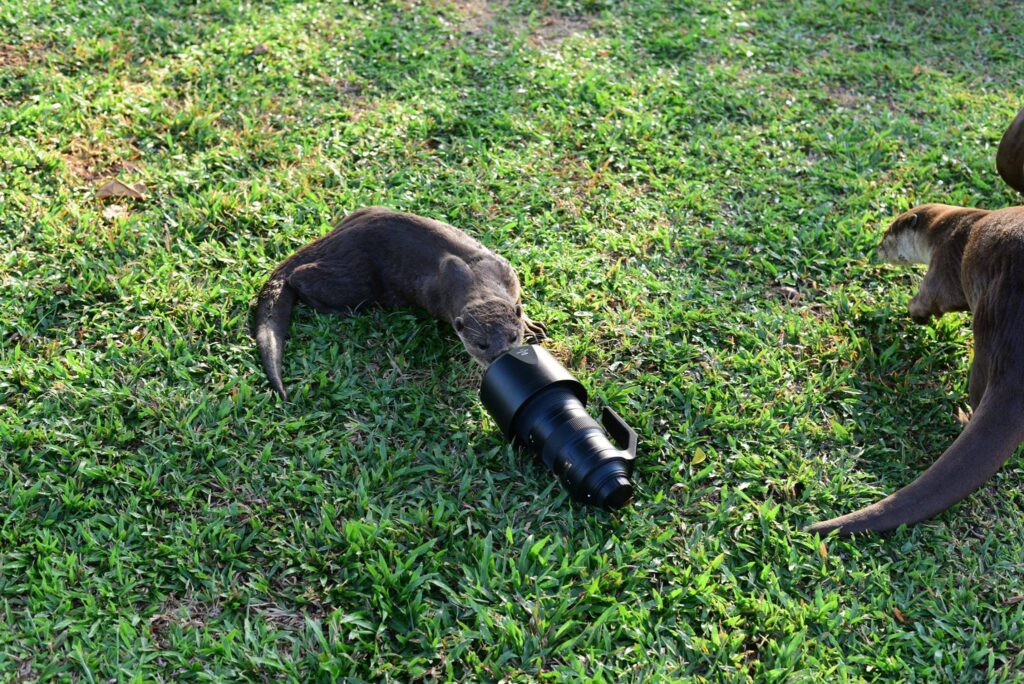The most common place to find otters today would probably be in the world of the Internet, where these animals are referred to as the cutest animals in the world. Regarded as animals which prefer to live in a close-knit community known as a ‘bevy’ or simply ‘family,’ otters are known to inhabit many parts of the world, including Europe, Asia and North America. They are found in a wide range of habitats: from coastal and riverine ecosystems to freshwater and marine waterbodies, which increases their influence over the animal kingdom.
Otters are Keystone Species
Otters are one of the groups of marine mammals who do not possess blubber-an extra layer of fatty tissues under their skin-for protection against extreme cold conditions. Consequently, to stay warm, otters consume almost 25% of their body weight per day. As a result, this voracious appetite leads to a significant influence over the populations of prey, and the resulting ‘trophic cascade’, consisting of crabs, sea urchins, snails, sea slugs, as well as marine plants like kelp and seagrass, changes accordingly. Therefore, otters are considered keystone species in their ecosystems.

A new food chain involving this keystone species was recently discovered by marine ecologist Dr Brent Hughes in Elkhorn Slough, a Californian estuary. While otters help restore and maintain kelp forests in marine ecosystems by means of a massive consumption of sea urchins which feed on these marine plants, otters also indirectly benefit the restoration of seagrasses and eelgrasses. Sea otters in this estuary feed on crabs, who in turn feed on sea slugs. These grazing molluscs ironically choose to consume the epiphytes attached to the seagrass, instead of the plant itself. The eradication of algae from the seagrass exposes it to more sunlight, thus helping it flourish and grow back to its original populations. As a result, as otters re-establish their predatory role in this marine habitat, they ensure the wellness of the most important primary producer in the ecosystem, thus helping restore balance in the community. This is similar to how terrestrial predators, such as wolves, help restore their ecosystems.
What does the diet of otters consist of?
The voracious diet of otters consisting of crabs and sea urchins helps conserve kelp and seagrass. Consequently, otters help restore the primary producers of food webs in the ecosystem like kelp forests and seagrass beds, which provide food to initiate the continuous cycle of the rest of the trophic cascade. Primary producers also provide a habitat for most primary consumers like tiny fish, grazing molluscs, and crustaceans.
However, their role in the fight against climate change is potentially vast, considering the impact they have on carbon beds and other organisms. Kelp and seagrasses are known for their extreme productivity and high rates of growth. Through photosynthesis, they can sequester vast amounts of atmospheric carbon.
According to studies, coastal vegetation like mangroves and seagrass can sequester approximately 20 times more carbon per acre than land forests, making it a valuable resource against climate change. Additionally, marine plants like kelp store around 200 million tons of carbon every year, quite comparable to the yearly carbon emissions of the state of New York. This carbon is stored in deep-sea detritus and in the ocean floor. This begs the question, is aimless tree planting worth it?
Otters have always had a dramatic relationship with humans. While they are known to be one of the most loveable animals on the planet, they are extremely territorial in nature and can thus be aggressive towards humans. Furthermore, humans have always been an even bigger threat to otters than they ever were to humans, exploiting otters since the 17th century by poaching, gear entanglements, shooting and illegal fur trade. However, today, this otter-human conflict is overshadowed by the biggest problem man faces today: climate change.
Conclusion
One will be astonished to know about the roles animals play in combating against climate change, and the natural mechanisms animals possess to survive in such adaptive conditions. To highlight the importance of these animals to combat climate change, a study in 2012 estimated that the economic value of sea otters in maintaining carbon-storing kelp forests in the North Pacific area was worth anywhere from about 200 to 400 million dollars! Another study in 2020 demonstrates that the monetary benefit of restoration of sea otters outweighs the loss it will bring to shellfish fisheries, all thanks to their advantages in fish stocks, carbon sequestration and ecotourism. It is unfortunate that otters are heavily threatened by the illegal wildlife trade.
Written by: Shreya Patankar
Help us Help Them! Think Wildlife Foundation is a non profit organization with various conservation initiatives. Our most prominent campaign is our Caring for Pari intiative. Pari is a rehabilitated elephant at the Wildlife SoS Hospital. 25% of the profits from our store are donated to the elephant hospital for Pari. Other than buying our wonderful merchandise, you could donate directly to our Caring For Pari fundraiser.
